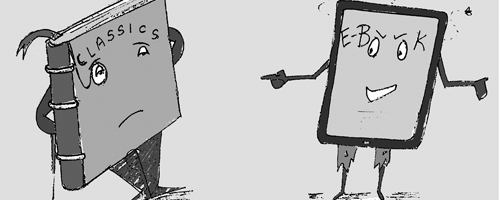Ampersand Vintage on Northeast Alberta Street has a reputation for showcasing some of the most interesting vintage collections of visual art in Portland.
Vintage for the imagination
Ampersand Vintage on Northeast Alberta Street has a reputation for showcasing some of the most interesting vintage collections of visual art in Portland. Within the past year the gallery and bookstore has hosted an eclectic mix of exhibitions, ranging from a vintage photo collection of 1930s cadavers and amateur porn to a photographic documentation of the inside of random Americans’ refrigerators.
This month is no different: Two vintage collections of once-credible publication imagery, in which the only visual similarity is that they both share this month’s theme of “pictures for the imagination.”
Before the time of photographs and easy mobility, knowledge of the world outside one’s home was limited to only the most rugged explorers and the elite who could afford the experience. Tales of these primitive globetrotters were documented in books and from the journals found after their death. They retold their close encounters with beasts of all shapes and sizes, describing every last detail just to prove that their mind was in proper working order and that they had not been the victim of hallucination.
It was the task of British naturalist Oliver Goldsmith to catalog these written accounts of mysterious creatures into drawn interpretations. The result was the 1774 publication of History of the Earth and Animated Nature, Goldsmith’s attempt to enlighten the Victorian-era population of the plethora of diversity within the planet’s biotic community.
The collection of drawings, taken from the first American printing of Animated Nature, would have taken the original readers’ imagination on an out-of-this-world experience, much like modern society would be enthralled by an image of a Martian or a Venusian. Goldsmith’s depictions are not particularly accurate: He exaggerates the anthropogenic look of the chimp and the ferociousness of the big cats. But many of these creatures were new to Goldsmith as well, who used written depictions of the creatures as a basis for most of his drawings.
What’s most important about this collection is that it gives its audience a chance to reminisce, to take us back to a time when people were still excited about the discovery of a new species and with the advancement of human knowledge of the natural world. While the creatures are nothing new, their cartoonish depictions remind us of the places yet to be discovered and the imagination that still exists within us.
Courtesy in Color will also be appearing alongside Animated Nature during this month’s theme. In this show are eight coloring-book posters printed by the Beckley-Cardy Company that preach 1929 ideals of good behavior to a presumably child audience. A no-bullshit approach to teaching children manners is written neatly at the bottom of the page: “Never brag or boast” reports one and “Don’t wear fancy clothes to school” states another.
While none of the images have yet been colored, they remain visually interesting and if nothing else provide the means for a silent chuckle. Thinking about the commandments written and their utter simplicity makes you imagine what a 1920s childhood would have been like when a parent’s biggest fear was a child with poor table manners.



